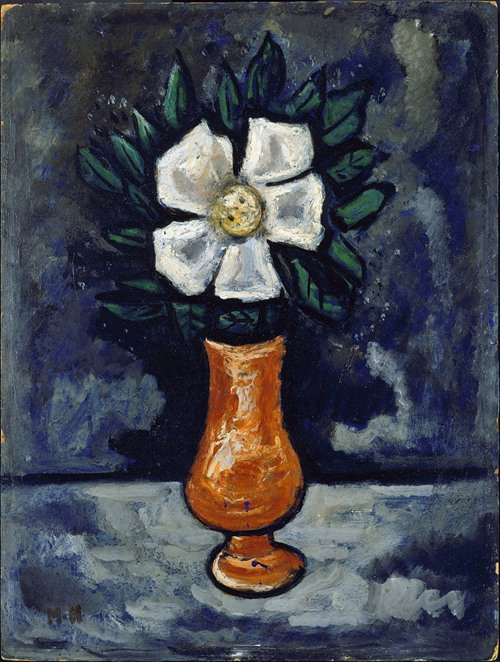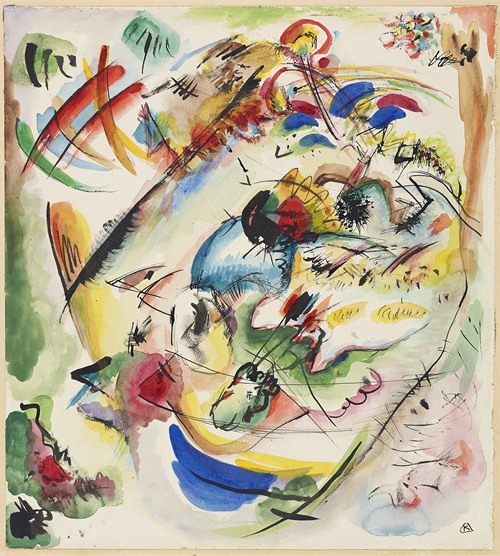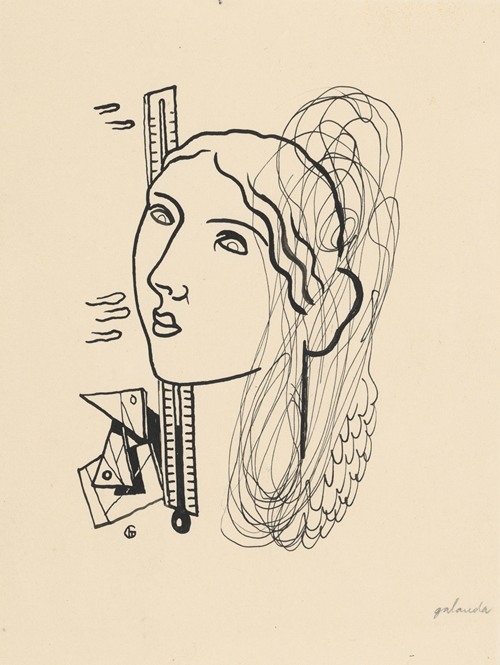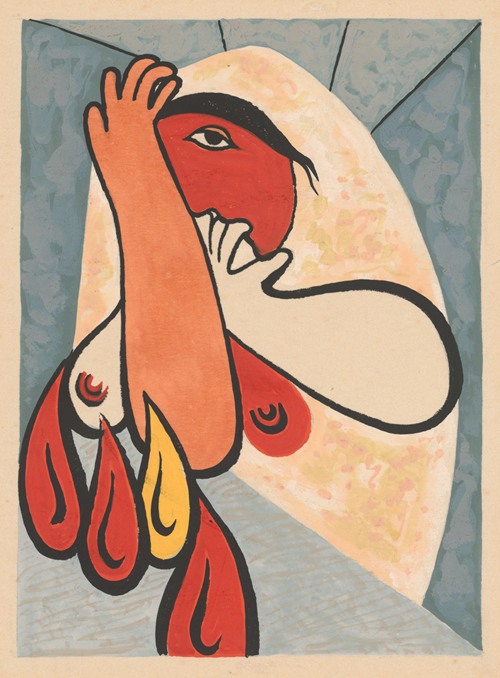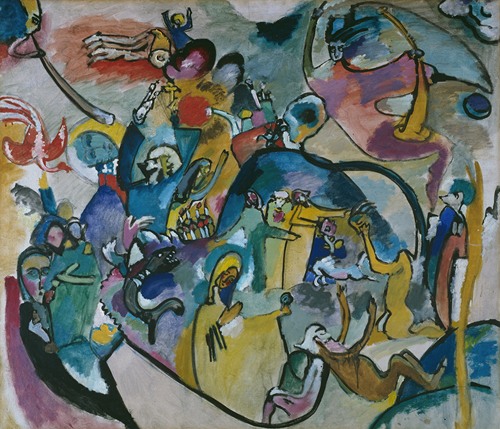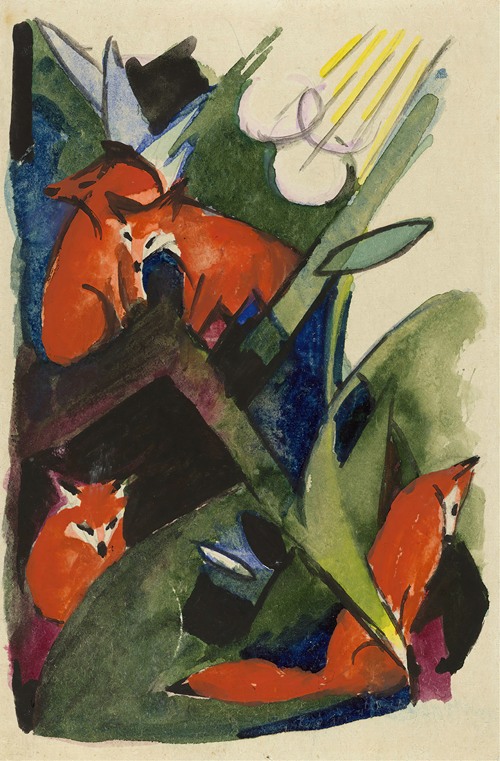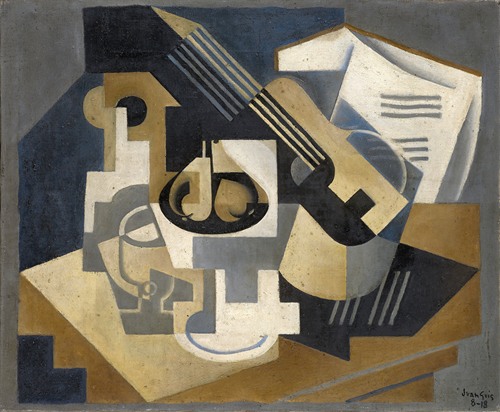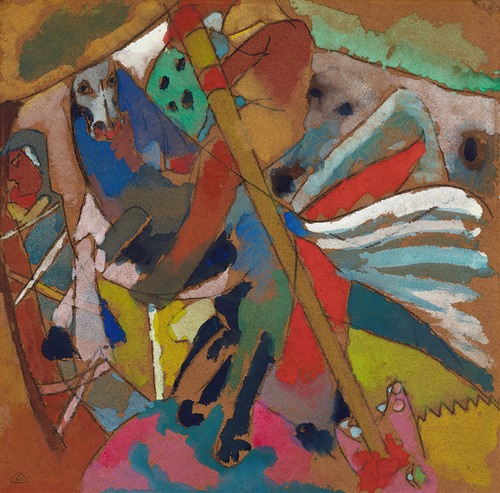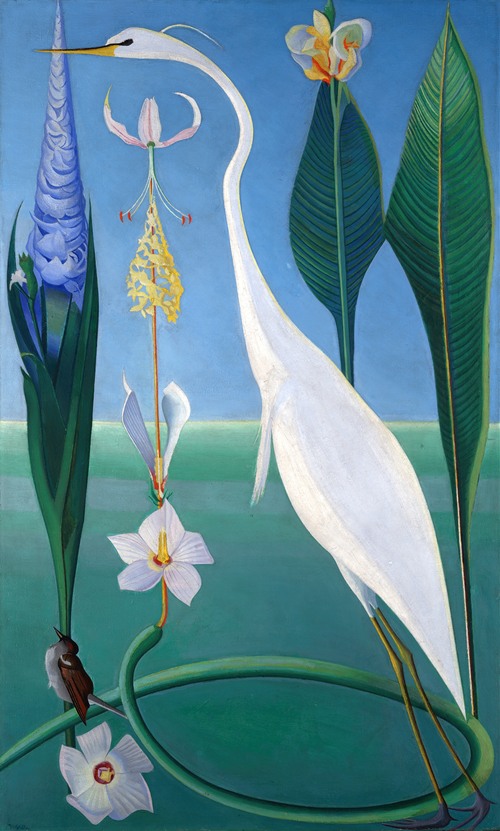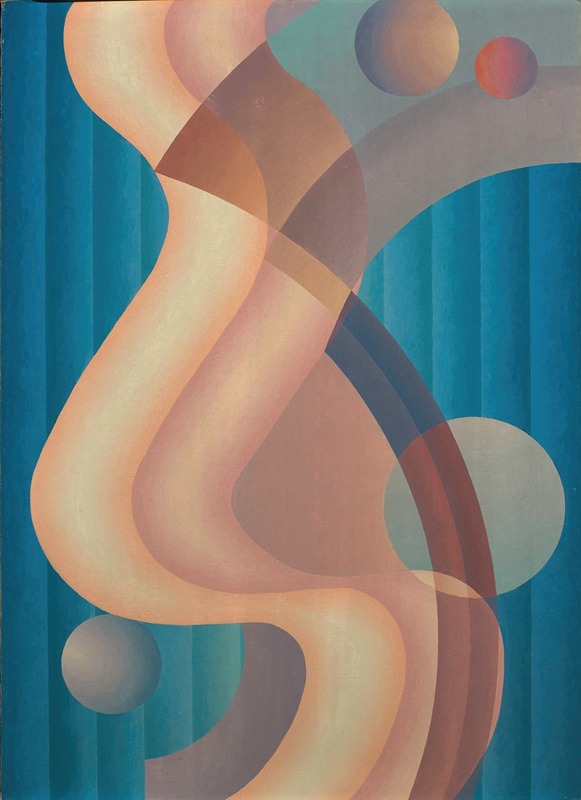
About 1935, only five years before his untimely death at age thirty-five, Stuart Walker converted to abstract art. Originally from Indiana, Walker had studied at the Herron School of Art in Indianapolis and for many years was a naturalistic painter. After he moved to Albuquerque, New Mexico, Walker frequently chose his subject matter from the state’s landscape and the distinctive architectural forms of its Spanish-style churches. In addition, horses, native women, and the Southwest’s unique plant life were favored themes. Yet when Walker turned to abstract work, his commitment was total. He began exhibiting his new paintings immediately in Denver and throughout the Southwest.
When the Transcendental Painting Group was organized, Walker was an original member. His artistic concernsparalleled those of Raymond Jonson and other members of the group, and he showed with them at the Golden Gate International exhibition in San Francisco in 1939. He was concerned in his paintings with the convergence of planar forms and architectural structure. The exploration of rhythmic form in a painting—a parallel concern to Raymond Jonson’s work at this time—became a major artistic interest. Like others in the Transcendental Painting Group, Walker hoped to appeal directly to the viewer’s senses. In many of his paintings, including Composition #61, he used anonymous titles to avoid any reference to the natural world he had artistically left behind.
Fellow members of the Transcendental Painting Group believed Walker had just begun to realize his artistic promise when he died. In his abstract work, they felt, he had found a level of inventive freedom not evident in his earlier, more realistic work.
